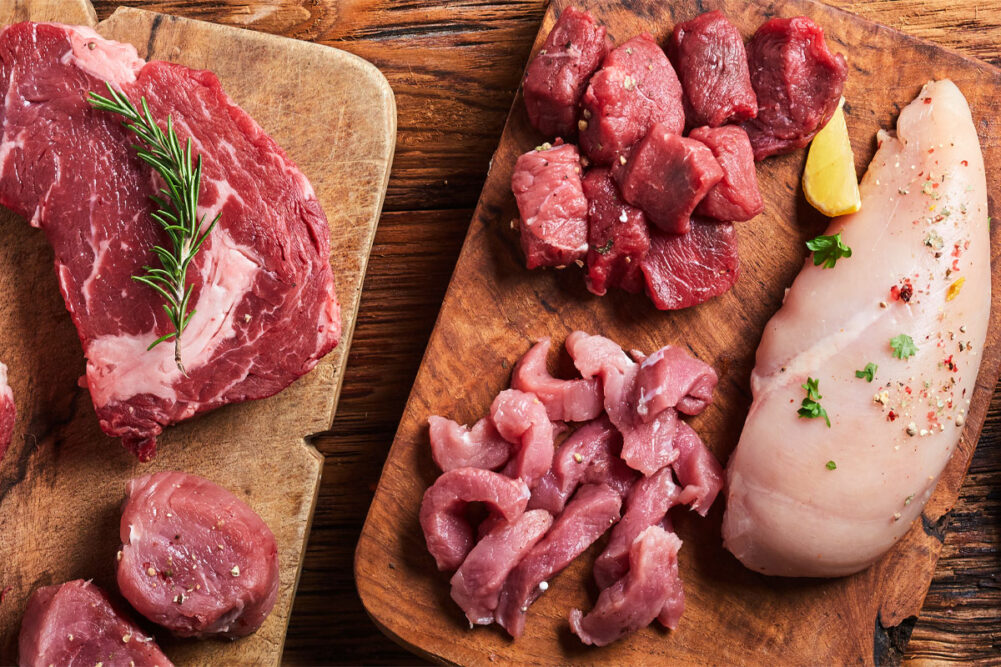KANSAS CITY – Three macro themes are dominating the market for meat and poultry products — lower production despite high demand, an improved labor situation and the indirect impact of the Russia-Ukraine war.
Demand has been strong domestically as well as in the export markets, said Adam Stout, risk management consultant with Kansas City-based StoneX Financial Inc.
“If you go back to the start of COVID and the pandemic, I don’t know that you could describe demand as anything other than exceptional,” he said during a June 6 presentation at the Sosland Purchasing Seminar. “Demand has been great for all of the products.”
Unexpectedly, the US economy saw spikes in income levels due to the fiscal stimulus.
“The cash on-hand by the US consumers was unlike anything we have ever seen,” Mr. Stout mentioned. “When the US consumer has money, they’re going to spend it, right? They’re going to spend it at restaurants, they’re going to spend at the grocery store and, judging by performance of some of these protein products, they’re going to spend it at the meat case.”
Despite extra currency in the market, a strain has been retail pricing. Mr. Stout pointed out that retail pricing in all protein categories is near record highs. Beef prices have increased by about 15%, in large part due to domestic demand.
He also attributed higher costs as one of the many results of the ongoing Russia-Ukraine war.
“We don’t deal a lot in the protein markets in either Russia or Ukraine, but the indirect impact is significant,” Mr. Stout said. “The concern is, are we going to continue to see demand?”
After the highest protein export shipments in 2021 the industry has seen, this year’s meat exports are already running at a slower pace, suggesting the beginning of a decline in demand.
As for keeping domestic demand alive, Mr. Stout sees retailers using product promotions to get products moving. As a sign that products may be beginning to get backed up, Mr. Stout gave an anecdote of how the grocery chain Hy-Vee promoted the availability of a side of beef for $1,300.
“That is the one area where I do think that we could start to see some improvements on the domestic demand offsetting some of these other inflationary pressures, is if these retailers start cutting into some of those margins and start featuring products,” he said.
The drought’s impact
While the labor situation recently has been one of the biggest challenges facing all industries, including meat and poultry processing, Mr. Stout said it likely will be overshadowed by another pressing issue. He said widespread drought conditions are having the biggest impact on the food industry currently.
“Without the labor deal, where it really focuses our attention is on the biggest problems right now for cattle and beef and long-term projections in that market, which is going to be the drought,” he said. “Basically, all areas west of the Missouri River have been significantly impacted by drought. That’s leading to a couple of things, which we’ll get into, but largely just continuing our trend of contraction within the industry.”
Non-dairy cow slaughter rates are at the highest they’ve been since the last drought about a decade ago, leading to a reduction in overall herd size. Heifer numbers are running at about 32%, compared with the usual 28%. With this trend, Mr. Stout expects supply issues to surface by the fourth quarter of 2022.
Inflation squeezes pork
Although the summer grilling season tends to be a signal for high pork demand, purchases at foodservice and grocery retail are lower than anticipated, which Mr. Stout hypothesized may be due to the impact of inflation on consumption.
Hog slaughter volume also declined by about 5%, with reduced hog numbers and limited expansion, while margins are the highest they have been for the past decade.
“The concern on the industry side is just the lack of expansion,” Mr. Stout said.
After the onset of African swine fever (ASF), which first began appearing in 2018, China has been working to compensate for the loss of hog production. There has been an explosion of commercial processing in the form of hog hotels, where each level serves a different function in production. Mr. Stout said, at this point, China’s production numbers have exceeded goals set to recover from ASF.
“I think it came back far quicker than anyone in the industry would’ve estimated,” he said.
Bird flu blues
In the poultry segment, Stout attributed highly pathogenic avian influenza (HPAI) as the leading denominator. He estimated 35 million to 37 million birds lost to date as direct result of the disease.
One concern is the significant turkey loss of 5 million to 5.5 million, which is even more critical when considering the declining stocks in cold storage, Mr. Stout said.
“It didn’t come at a good time in the industry,” he said. “If you look back and look at where we’re at from a freezer-inventory standpoint, our turkey stocks were already running low, down basically all year. This has been the case dating back to COVID.”
Considering broilers account for 90% of poultry production, they have the biggest impact on the sector. While the loss of broilers is about half that of turkey, it is significant. Mr. Stout estimated that 800 million broilers are slaughtered per month compared to 20 million turkeys.




